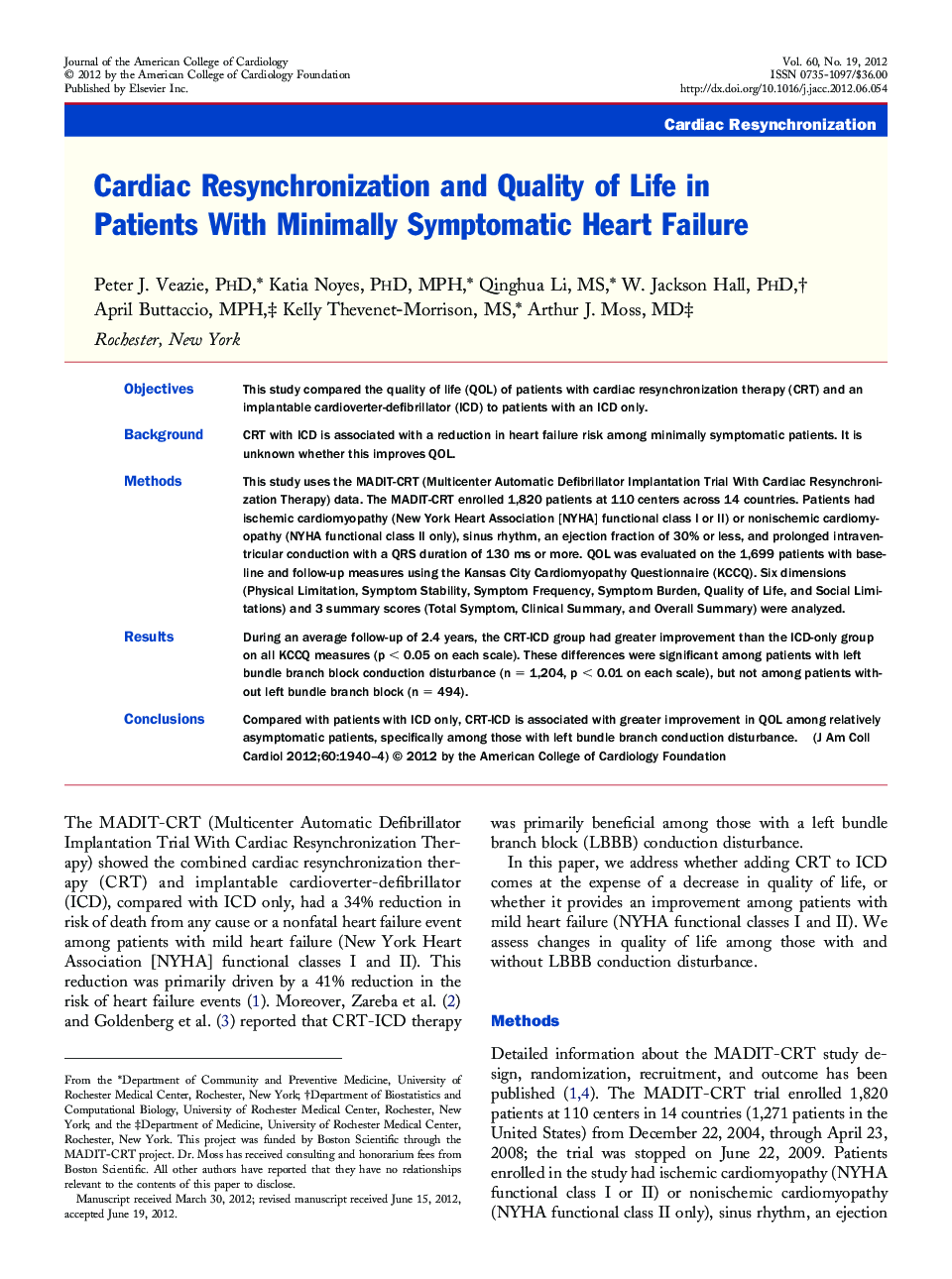| Article ID | Journal | Published Year | Pages | File Type |
|---|---|---|---|---|
| 2946738 | Journal of the American College of Cardiology | 2012 | 5 Pages |
ObjectivesThis study compared the quality of life (QOL) of patients with cardiac resynchronization therapy (CRT) and an implantable cardioverter-defibrillator (ICD) to patients with an ICD only.BackgroundCRT with ICD is associated with a reduction in heart failure risk among minimally symptomatic patients. It is unknown whether this improves QOL.MethodsThis study uses the MADIT-CRT (Multicenter Automatic Defibrillator Implantation Trial With Cardiac Resynchronization Therapy) data. The MADIT-CRT enrolled 1,820 patients at 110 centers across 14 countries. Patients had ischemic cardiomyopathy (New York Heart Association [NYHA] functional class I or II) or nonischemic cardiomyopathy (NYHA functional class II only), sinus rhythm, an ejection fraction of 30% or less, and prolonged intraventricular conduction with a QRS duration of 130 ms or more. QOL was evaluated on the 1,699 patients with baseline and follow-up measures using the Kansas City Cardiomyopathy Questionnaire (KCCQ). Six dimensions (Physical Limitation, Symptom Stability, Symptom Frequency, Symptom Burden, Quality of Life, and Social Limitations) and 3 summary scores (Total Symptom, Clinical Summary, and Overall Summary) were analyzed.ResultsDuring an average follow-up of 2.4 years, the CRT-ICD group had greater improvement than the ICD-only group on all KCCQ measures (p < 0.05 on each scale). These differences were significant among patients with left bundle branch block conduction disturbance (n = 1,204, p < 0.01 on each scale), but not among patients without left bundle branch block (n = 494).ConclusionsCompared with patients with ICD only, CRT-ICD is associated with greater improvement in QOL among relatively asymptomatic patients, specifically among those with left bundle branch conduction disturbance.
